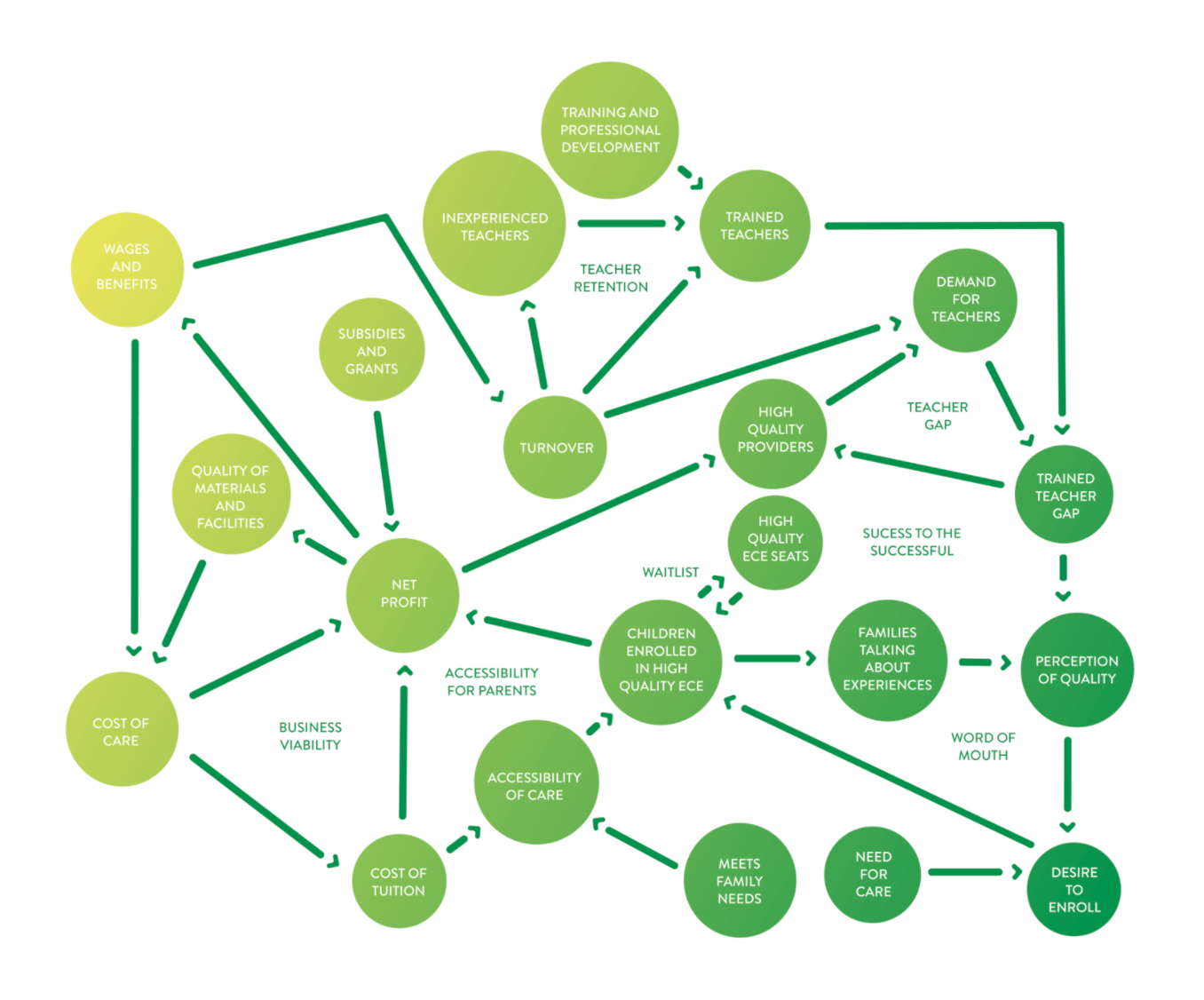The Challenge:
We know that high quality early childhood education (ECE) can change the trajectory of a child’s life. Yet, access is currently limited and quality is variable, especially for children in poverty who would benefit most. We want more children to experience great early educational environments, but interventions can often lead to negative, unintended consequences. Why? The ECE system is interdependent and tenuously structured. Without understanding these interconnections, interventions in one part of the system can strain other areas, worsening access and quality over time.
The Approach:
UNDERSTAND THE PROBLEM:
SKIP combined rigorous qualitative, quantitative, and community-based research through a systems-lens to understand the challenges facing the early childhood education.
SKIP developed a computer simulation model using system dynamics using quantitative and qualitative data, including the listening tours with parents and early childhood educators and one-on-one interviews with key stakeholders who were deeply embedded in the ECE system. After the initial model structure was complete, SKIP conducted two feedback sessions with stakeholders and incorporated their critiques into the model.
Using the simulation model, SKIP was able to test commonly proposed policy interventions to see how the system might react over time. This can help us avoid unintended consequences and prioritize the highest-leverage interventions in a system with limited resources and much to do.
The Result:
Findings show that there are four interdependent feedback loops that drive access and quality in the system: accessibility for parents, the perception of ECE quality, workforce and the viability of the ECE business model. Accessibility for parents is limited by affordability, and affordability is limited by the high costs of care. The high costs of care make it difficult for businesses to raise worker wages without going out of business, but without raising wages, workers are turning over at extremely high rates. With high turnover, the quality of care is reduced and parents are less willing to enroll their children. Furthermore, when parents perceive care as low-quality, they tell other families and those families become less willing to enroll.
EDUCATE & ADVOCATE
SKIP shared the model results with stakeholders, advocating for region-wide strategy that takes into account the system structure.
This system makes it extremely difficult to intervene without unintended consequences. However, there are some places we can start:
-
Prioritize workforce turnover: without reducing workforce turnover, other interventions such as professional development will be wasted as teachers leave the system.
-
Bring in new funding: programs cannot afford to pay for increased salaries or other interventions. New funding is necessary for programs to stay afloat while increasing quality.
-
Increase accessibility and quality in tandem: if quality is increased without accessibility, only those with means will be able to access high-quality care. If accessibility is increased without quality, people will have negative experiences, making them less likely to enroll overall.
SKIP shared these findings with our partners in First Step to Equity, a coalition working to increase access to high-quality care across Saint Louis and presented the model at the 2020 International System Dynamics Conference. To see the full results of our ECE modeling work and hear the stories of families, teachers, and providers, visit our website.

A causal loop diagram showing the feedback loops at play in the early childhood education system in St. Louis.